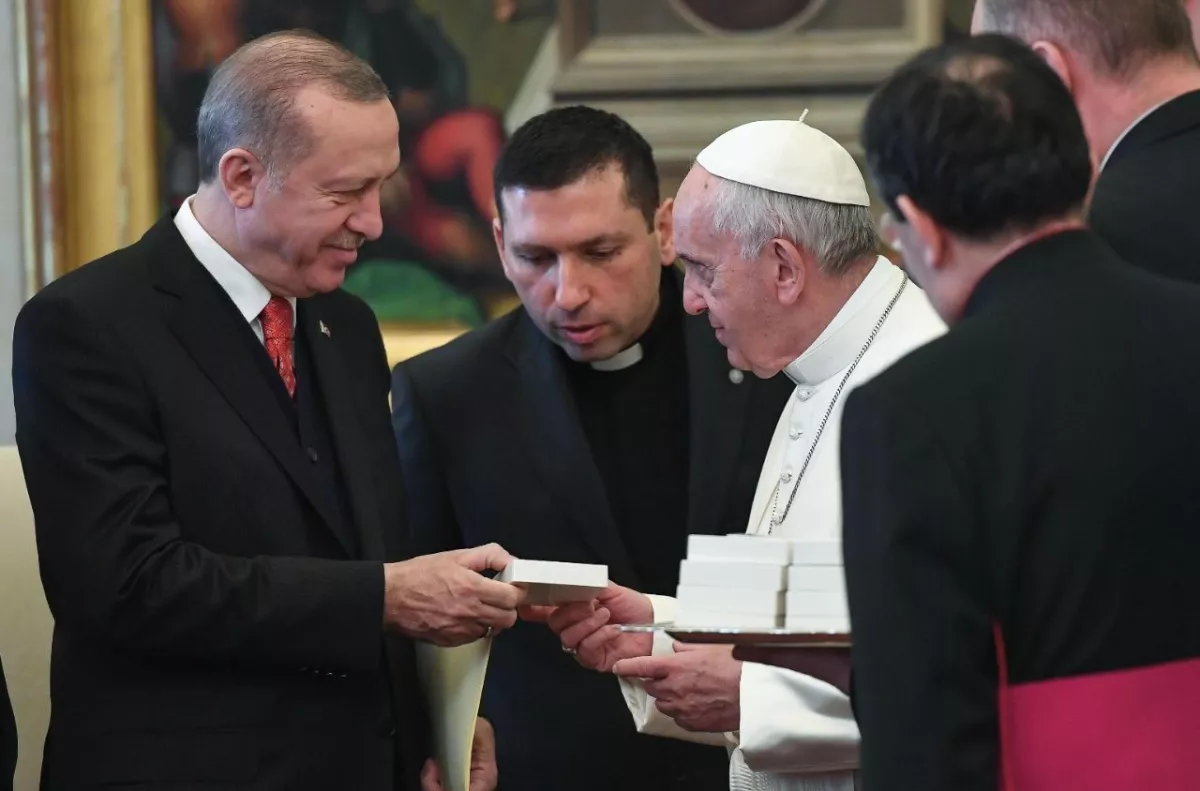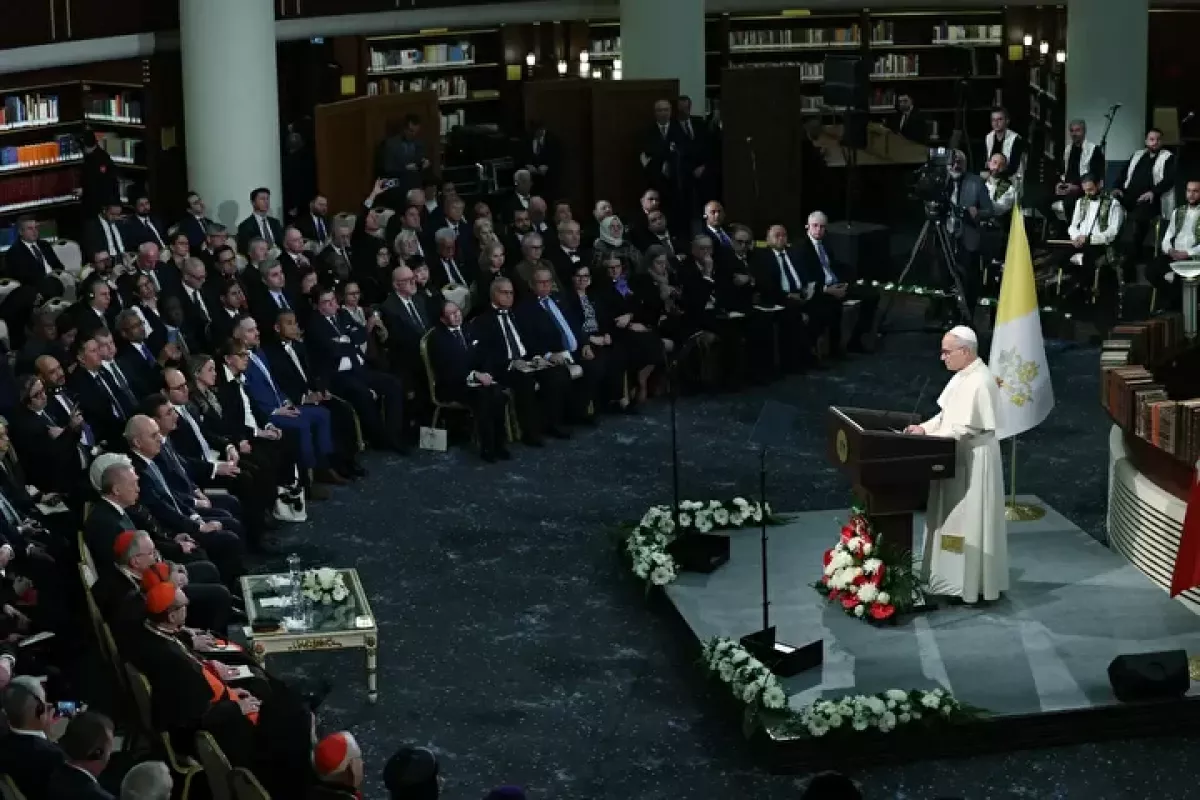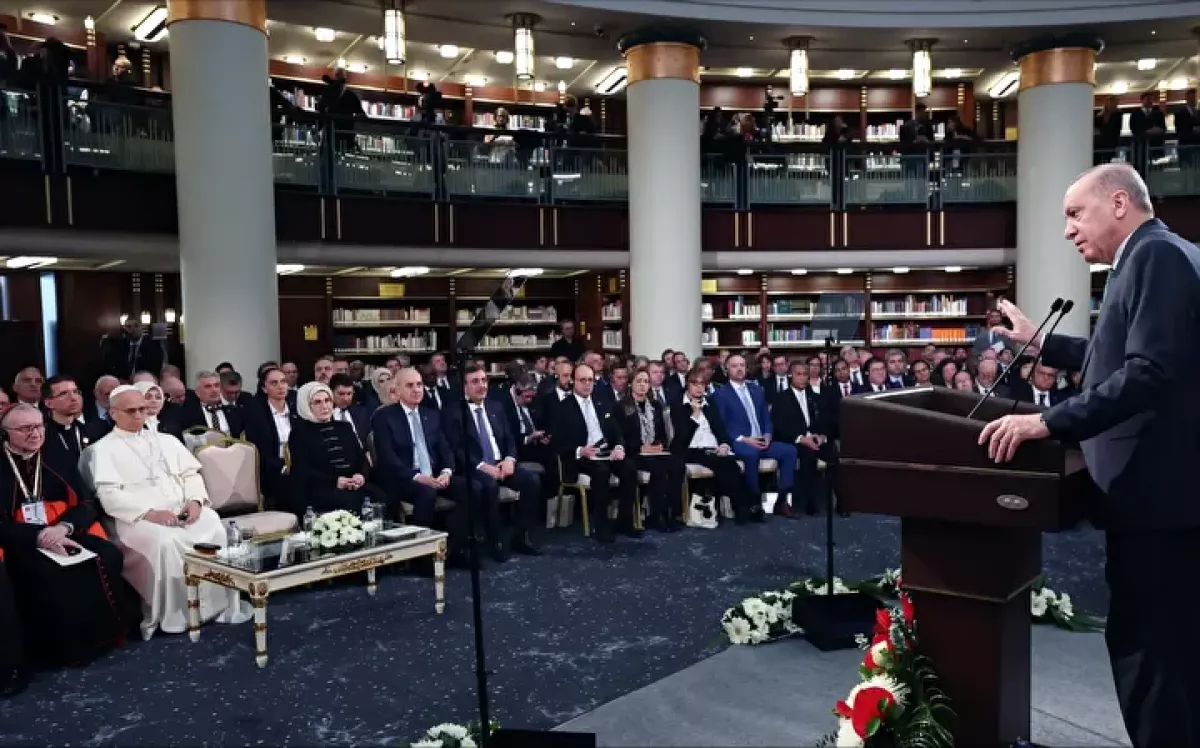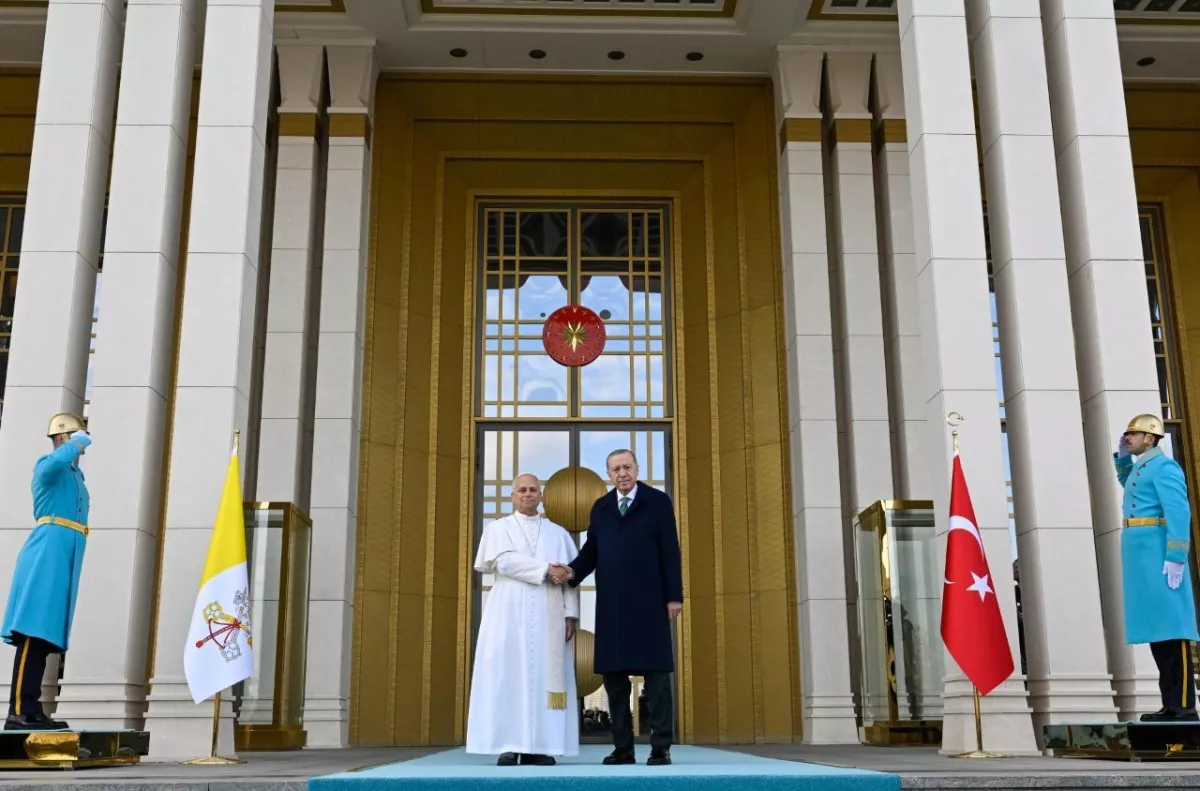Pope Leo XIV bridges faiths in Türkiye The pontiff’s historic journey
Unique! Against the backdrop of often rampant anti-Islamic and anti-Turkish propaganda from certain circles in the West, Pope Leo XIV made his first foreign visit after his election to Türkiye. More precisely, his visit is still ongoing under the motto “One Lord, one faith, one baptism,” but even today, it can be confidently said that this trip is highly symbolic on many levels, including its ecumenical, interreligious, and peacemaking significance.

Naturally, the choice of country for the pontiff’s first visit is being viewed in a particularly significant light. Yes, the programme in Türkiye gives a prominent place to the city of İznik—formerly Nicaea—where 1,700 years ago the first ecumenical council in the history of Christianity (the First Council of Nicaea) was held. However, the very fact that the first visit was made to a Muslim-majority country requires no additional comment.
In 324, Emperor Constantine declared Christianity the state religion of the Roman Empire, and the following year convened the First Council of Nicaea, recognised as ecumenical, of the Church. In 330, Constantine moved the capital to the city renamed in his honour—Byzantium became Constantinople.
After Constantinople came under Ottoman rule in 1453, Sultan Mehmed II bestowed upon the head of the Orthodox Church—the Patriarch of Constantinople—not only spiritual authority but also administrative and judicial power over the faithful. At the same time, the Ottomans preserved one of the important Byzantine traditions: the investiture of the Ecumenical Patriarch by the ruler. The Sultan, like the Orthodox emperor before him, would hand the newly elected patriarch the symbol of patriarchal authority—the staff. Finally, in 1930, Constantinople was officially renamed Istanbul.

From relatively recent history, it is worth noting that before Pope Leo XIV, four Roman pontiffs had visited Türkiye. In 2018, the President of Türkiye, Recep Tayyip Erdoğan, visited the Vatican, where he was presented by Leo XIV’s predecessor, Pope Francis, with a bronze medallion depicting an angel embracing the Northern and Southern Hemispheres of the Earth while simultaneously overcoming the resistance of a dragon.

In the summer of 2024, a summer camp was held in Trabzon, Türkiye, for youth from various communities of the Anatolian Apostolic Vicariate. Nearly 60 young men and women engaged in reflection, prayer, and participation in cultural activities.
Today, we are witnessing modern history in the making—a history that will also be recorded for the ages.

As Pope Leo XIV noted on November 27 during a meeting at the National Library of Ankara with members of the public and diplomats, he feels genuine joy that Türkiye has become the first destination of his apostolic journeys. In an artistic manner, he emphasised that against the backdrop of the country’s natural beauty and cultural-spiritual richness, “being a people with such a great past is both a gift and a responsibility,” especially in light of contemporary challenges.
Given that Pope Leo XIV’s visit is held under the emblem of the “Dardanelles Bridge,” he unfolded this very image in his address. He emphasised that Ankara holds an important place in the present and future not only of the Mediterranean but of the entire world. In a brilliant rhetorical form, he drew a line from Türkiye’s internal diversity to its international role: “Even before linking Asia with Europe, East with West, this bridge connects Türkiye to itself.”
Pope Leo XIV highlighted the significance of this principle through the lens of society: a community remains alive only if diversity exists, which allows, through “bridges” between its “plurality,” the formation of a truly “civil society”. In this context, the head of the Roman Catholic Church assured that Türkiye’s unity is also upheld by the country’s Christians, who feel themselves an integral part of Turkish identity.
Recalling his predecessor, Pope Francis, who contrasted the “globalisation of indifference” with a culture of dialogue, Pope Leo XIV brought to the forefront the “image of the great bridge,” serving precisely as a tool for such dialogue. In his, once again, very eloquent formulation, the manifestation of the Almighty to the world became possible through building “a bridge between heaven and earth.” The Lord did this to transform our hearts—to make them like the heart of the Creator. As Leo XIV explained, this suspended and majestic bridge effectively challenges the laws of physics: like the feeling of love, it possesses not only a deeply personal, intimate dimension but also a visible, social one.

Meanwhile, at a joint press conference with Pope Leo XIV, the President of Türkiye, Recep Tayyip Erdoğan, emphasised that all citizens of the country enjoy equal rights regardless of their national, religious, or linguistic affiliation. He expressed satisfaction that Türkiye and the Vatican share common positions on protecting peace and ensuring justice amid global challenges—conflicts, humanitarian crises, poverty, injustice, and climate change.
Highlighting Ankara and the Vatican’s joint opposition to “any aggressive actions that could harm the historic character of Eastern Jerusalem,” Erdoğan described Pope Leo XIV’s visit as a significant step that strengthens “our shared platform” for promoting intercultural and interfaith dialogue.
One of the most important joint messages from Pope Leo XIV and the President of Türkiye to the world was the emphasis on the need to uphold family values. According to Leo XIV, the family has always been the foundation of social life for humanity. He noted that in Turkish culture, the family occupies an even more central role than in many other countries; yet globally, there is currently a “shortage of initiatives to support its centrality.” In agreement, Erdoğan emphasised that without protecting the institution of the family, it is impossible to protect the individual.

It should be reiterated that the visit of the head of the Roman Catholic Church to Türkiye is ongoing. Yet even the first day of the pontiff’s trip clearly demonstrated how Islam and Christianity can not only coexist peacefully but also move in the same direction—in the work of protecting human life and opposing injustice toward the beloved creations of the Almighty.








